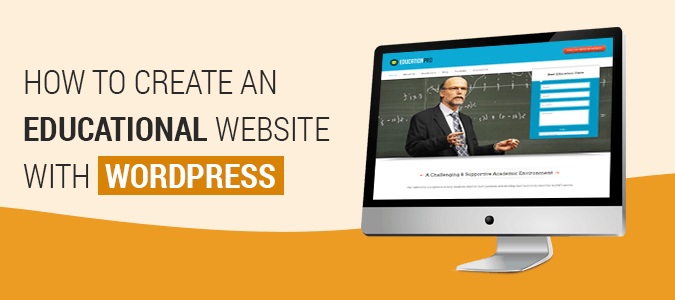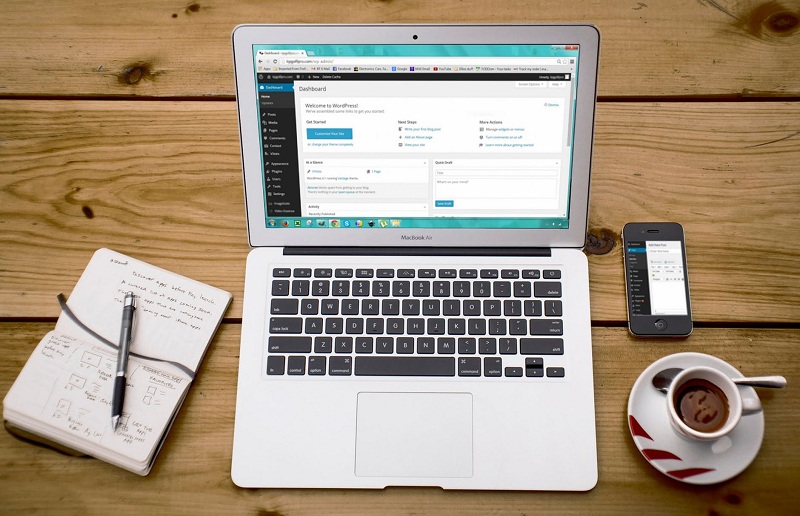Main Ideas How to Create an Educational Website with WordPress

Online education is a huge trend nowadays. It is flexible, affordable, and many students prefer it over traditional education. Some people choose to educate themselves further with the use of educational websites online, and even the educational system has started to promote the use of trustworthy sites.
If you know this, you probably want to learn how to create an educational website that will spread knowledge to those who need it. This is especially important for existing academic institutions that want to keep their students informed, interested, and provide them with online courses.
Would you like to learn how to make a school website? In this article, that’s exactly what you’ll learn.
A Guide to Create Educational Website
The most convenient and popular method for creating any kind of website today is by using the WordPress platform and its educational themes. This is by far the easiest and most widely selected choice when it comes to educational sites, mostly because of its grand variety of education themes and college templates.
To create a school website, you need to follow these steps:
1. Purchase a Domain
You can’t have a website without a domain. It’s what people use to find your website and how you exist on the World Wide Web. So, the first thing you must do is get a domain that you like for your website.

This can be anything you want as long as it isn’t used by anyone else. In most cases, educational institutions such as schools and colleges use the name of the institution itself. If you want your students to be able to find you, this is definitely something to consider.
Thankfully, there are plenty of websites where you can purchase a domain. The prices can vary significantly, and so can the quality of the website. Therefore, make sure to choose a trustworthy domain provider.
2. Choose a Hosting Plan
WordPress has many hosting plans available. They combine different features, which is why you should definitely check your options before you purchase one. Sure, you can always upgrade your version, but it might cost you more.
To avoid any content mistakes, we recommend that you select a hosting plan that allows you to use plugins such as grammar checkers and SEO tools.
3. Choose a Theme
Now, this is where things get really interesting. Before you move forward with creating the content for your educational website and filling it with useful pages, you need to choose a theme. The theme is the design of your website, which makes it really important.
When you search for a theme for the website on WordPress or any other platform, you should pay attention to many things, including the design. Different themes will have different options and features, some of which will make your website functional, and others that will not.
Therefore, based on what you want your website to look like, you need to choose a theme that is equipped with the necessary basic features.

4. Create Useful Pages
Even if you manage to create great content, you need to organize it properly. The idea behind an educational website is to make the life of students easier, not harder. Therefore, when you have your content ready, make sure to organize it throughout the design in a way that makes it simple to navigate for the users.
One excellent idea for an educational website today is creating a page with trustful resources that students can use. For example, you can provide them with some useful and safe tools to use, a list of the reliable research paper writing services, or a page with tips on how to find reliable sources for their papers.
When you attempt to educate and help others, the world is your oyster. Use your imagination and eye for design and try to make the website as easy to navigate as possible.
5. Make Use of Plugins
Maintaining a good website isn’t as hard as it used to be before. This is all thanks to the versatile plugins that are available to everyone for use. You can download plugins for everything from security to SEO optimization of your content. You can use them to organize the pages, communicate with the students, oversee the entire teaching-learning process, and even grade learners.
If you check the educational plugins available, you’ll probably find many that will help you set up online courses, as well as forums your students can use to talk to each other. There are also plugins that allow you to manage courses and modules, assess students, track the enrolment process, and keep your documents safe and organized.
Final Thoughts
Online education is very popular these days. With the right approach toward creating an educational website, you can even make this fun and enjoyable for your students. Moreover, in today’s modern world, having an online presence for your educational institution is a must. How else will you inform all students in real-time?
Author’s Bio:
Michael Turner is a college professor with a Ph.D. in psychology and a Master’s degree in education. Thanks to his vast experience in teaching, Turner has learned to combine both the traditional and the modern in his classroom. He is also technology-aware, which is why he chose to share his insights with every educator out there.
